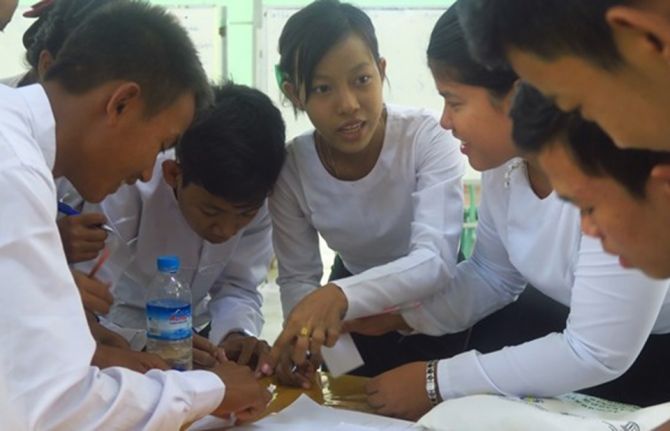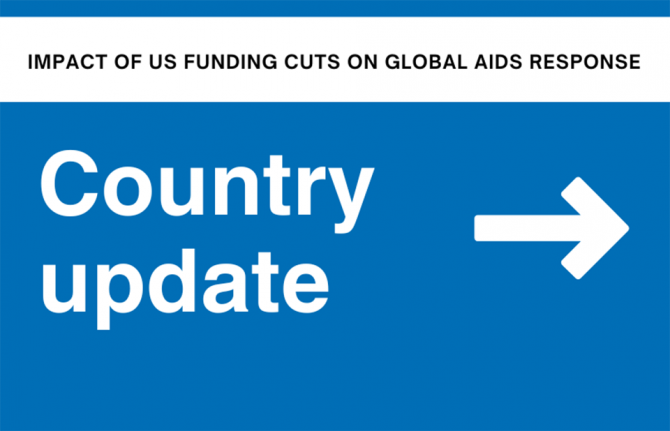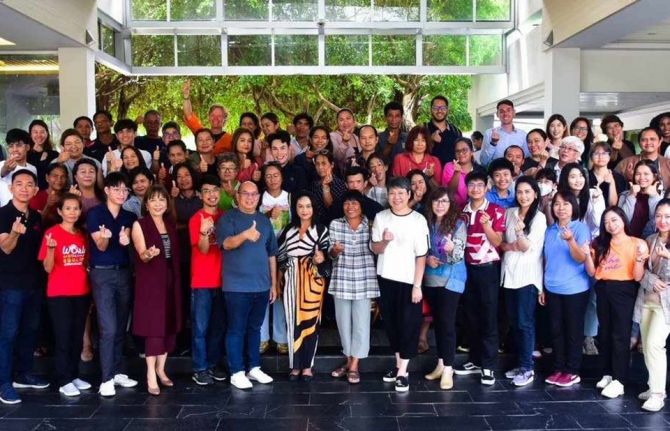

Feature Story
Positive health, education and gender equality outcomes for Myanmar youth
14 June 2019
14 June 2019 14 June 2019This story was first published by UNESCO
Young people in Myanmar make up more than half of the national population, with 5-14-year-olds making up the largest group. This youthful population brings incredible potential for sustaining Myanmar’s recent development momentum, but only if investments are made to address the challenges that prevent them from making informed decisions about their health and well-being.
Research shows that young people in Myanmar have a limited understanding of sexual and reproductive health, with 38 per cent of adolescents admitting they did not know a woman could become pregnant if she has sex only once, and only 16.67 per cent of young people aged 15 - 24 having accurate HIV prevention knowledge.
To address these issues, UNESCO Yangon, in collaboration with the Ministry of Education, held a policy seminar on 22 March, 2019. More than 50 representatives from Government and non-Government organizations came together to share good practices and identity opportunities for strengthening sexuality education policy, curriculum and teaching in Myanmar.
The event featured the launch of the Myanmar-language version of the 2018 revised International Technical Guidance on Sexuality Education (ITGSE), developed by UNESCO, in partnership with the World Health Organization, UNICEF, UNFPA, UNAIDS, and UN Women. The Technical Guidance assists education, health and other relevant authorities in the development and implementation of sexuality education programmes and materials.
UNESCO regional advisor for health and education, Kabir Singh, said the UN Technical Guidance covers a wide range of topics; going beyond sexual and reproductive health to include broader life skills such as negotiating consent and staying safe.
“While young people in Myanmar face challenges in accessing sexual and reproductive health (SRH) information and services, the situation is further exacerbated by social and gender norms that prevent children and young people, particularly girls and other vulnerable groups, from achieving good health and well-being,” he said.
“This is why it is critical that CSE programmes begin at the ages of 5 – 8, as outlined in the UN Technical Guidance. We need to help children at the earliest ages understand gender equality, healthy relationships, and respect for themselves and one another.”
Sexuality education in Myanmar
The National Life Skills Education curriculum in Myanmar, developed by the Ministry of Education (MoE) in collaboration with UNICEF, has been part of the core curriculum in primary schools since 2006, and in middle schools as a compulsory co-curricular subject since 2008. The lower secondary curriculum (grades 5-8) covers seven themes, including reproductive health, HIV and STIs, substance use, and disease prevention and nutrition.
A 2012 assessment of Life Skills Education in middle school found that knowledge around reproductive health was low, with the authors suggesting that cultural sensitivity and lack of teacher training may be contributing factors. A recent UNICEF U-Report, a free SMS social monitoring tool for youth participation in Myanmar, also found that most survey respondents learned about sexuality education through social media, a source that is often not scientifically accurate or age-appropriate.
At the 2019 UNESCO-led policy seminar, Myanmar government representatives agreed to review Life Skills Education in the context of the UN Technical Guidance, ensuring the sexuality education being delivered is comprehensive and age-appropriate. Representatives also indicated that comprehensive sexuality education should be strengthened as part of current education reforms to the basic education curriculum and pre-service teacher education curriculum.
Min Jeong Kim, Head of UNESCO Myanmar Project Office, welcomed the close working relationship between UNESCO and the Ministry of Education in introducing comprehensive sexuality education into the education system.
“The Ministry of Education has shown strong leadership in their efforts to address the challenges faced by children and young people, such as gender inequalities, and sexual and reproductive health. UNESCO shares this commitment to positively impact young people’s lives and look forward to continuing to work in partnership the curriculum core team and the Teacher Education Colleges to integrate CSE into the new curriculum for teacher education,” Min Jeong Kim said.
Delegates at the policy seminar discussed ways in which to introduce comprehensive sexuality knowledge and related life skills to current and future generations of children and young people in Myanmar. The seminar provided a platform that bridged key stakeholders such as public service providers, development partners and non-Government organizations, with a view to starting a dialogue on comprehensive sexuality education, understanding the gaps and identifying the best way forward for full implementation.
The revised technical guidance on sexuality education
The original international technical Guidance published in 2009 positioned sexuality education primarily as part of the HIV response. However, while HIV prevention remains important, evidence and practice demonstrate that sexuality education has a much broader relevance to other issues, not only for young people’s sexual and reproductive health but also for their overall wellbeing and personal development.
The revised Guidance presents sexuality with a positive approach, recognizing that CSE goes beyond educating about reproduction, risks and disease. It reaffirms the position of sexuality education within a framework of human rights and gender equality. It reflects the contribution of sexuality education to the realization of several internationally agreed commitments in relation to sexual and reproductive health, as well as the achievement of the goals in the 2030 Agenda in relation to health and well-being, quality and inclusive education, gender equality and women and girls empowerment.
Based on a review of the sexuality education around the world and drawing on best practices in the various regions, the Guidance demonstrates that sexuality education:
- helps young people become more responsible in their attitude and behaviour regarding sexual and reproductive health
- is essential to combat the school dropout of girls due to early or forced marriage, teenage pregnancy and sexual and reproductive health issues
- is necessary because in some parts of the world, two out of three girls reported having no idea of what was happening to them when they began menstruating and pregnancy and childbirth complications are the second cause of death among 15 to 19-year olds
- does not increase sexual activity, sexual risk-taking behaviour, or STI/HIV infection rates. It also presents evidence showing that abstinence-only programmes fail to prevent early sexual initiation, or reduce the frequency of sex and number of partners among the young.


